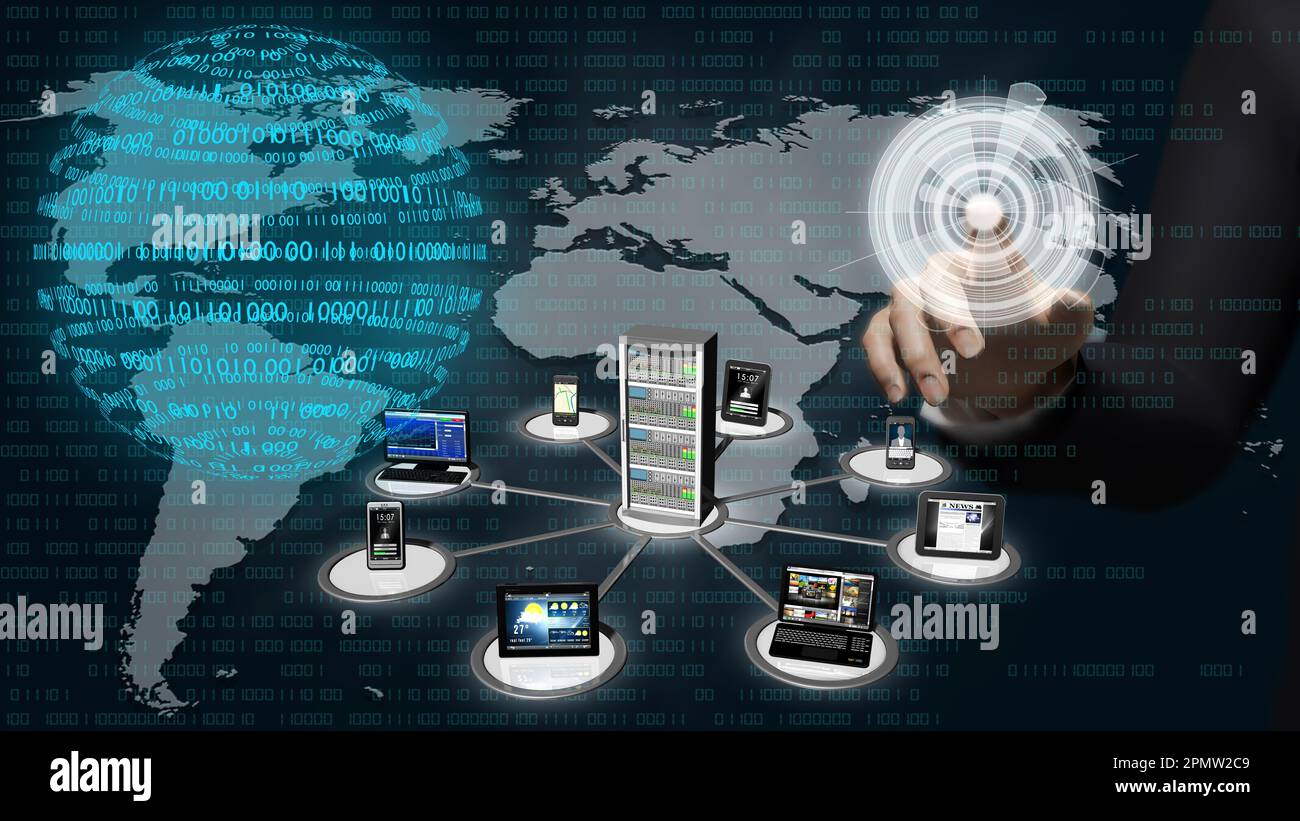The digital environment presents itself as a complex and interconnected ecosystem. Understanding it requires a global approach, encompassing not only technology but also its impacts on the environment, the economy, and social and political dynamics. It is a space structured by a multitude of technological instruments, facilitating access to resources and services. However, it generates a real environmental footprint, particularly due to its energy consumption and the pollution resulting from its manufacturing phase. To navigate this universe autonomously and protect one’s privacy, it becomes crucial to decipher its codes and understand its stakes.
Table des matières
ToggleUnderstanding the Digital Environment: Glossary
Digital environment: The digital environment is a space structured by various technological instruments, allowing users to access dematerialized resources and services. It is important to understand this environment to better grasp the tools and digital data that compose it.
Environmental impact of digital technology: Digital technology is not immaterial. Its manufacturing is the main source of environmental impacts, followed by the pollution associated with its use. For instance, data centers, essential for storing and processing data, consume a tremendous amount of energy.
Industry 4.0: This fourth industrial revolution is characterized by the deep integration of digital technologies into production and management processes, promoting automation and efficiency. Innovations like real-time analytics and augmented reality are examples of this.
Digital disruption: A term used to describe a technological innovation that disrupts an existing market. This aspect of innovation is explored in depth in the article on digital disruption.
Shared economy: An economic model based on sharing resources through digital platforms. This allows for a more efficient use of existing capacities, thus reducing the need for new goods production.
Augmented reality: A technique that overlays digital content onto the real world as perceived. It has numerous applications, particularly in industrial training and maintenance, where it greatly enhances efficiency and access to information. Learn more about its benefits in this article on augmented reality.
3D printing: An additive manufacturing process that creates three-dimensional objects by layering material. This technology is revolutionizing design and production, as highlighted in the article on 3D printing in industry.
Cloud Computing: A technology that allows access to computing resources (servers, storage, applications) over the Internet, rather than on a local server or personal computer. It plays a crucial role in the modern digital environment.
OPC-UA: Open Platform Communications Unified Architecture is a standard for interoperability for secure and reliable data exchange in industry. It is fundamental for optimizing industrial processes as well as for supply chain management.
Smart contracts: Autonomous programs that automatically execute when predefined conditions are met. They are used to enhance supply chain management by ensuring secure and transparent transactions without intermediaries.
Cybersecurity: The practice of protecting connected systems, including hardware, software, and data, against cyberattacks. With the evolution of Industry 4.0, this becomes increasingly vital to protect digital infrastructures.

FAQ: Understanding the Digital Environment
Q: What is the digital environment?
A: The digital environment is a space structured by various technological instruments, allowing users to access digital resources and services. This includes the infrastructure of networks, online platforms, and digital devices.
Q: What are the main impacts of digital technology on the environment?
A: Digital technology primarily impacts the environment through its energy consumption, particularly through data centers that store and process digital data, as well as the manufacturing of electronic hardware that generates pollution during its production.
Q: Why is it important to understand the digital environment?
A: Understanding the digital environment is essential to navigate it autonomously. It allows one to view this space as an ecosystem and to be aware of its associated stakes, particularly regarding privacy and security.
Q: How does digital technology affect the economy?
A: Digital technology plays a significant role in the economy by facilitating access to markets, optimizing business processes, and enabling the emergence of new economic models such as the shared economy and on-demand manufacturing.
Q: What precautions should be taken to protect one’s privacy in a digital environment?
A: To protect one’s privacy in a digital environment, it is important to use strong passwords, be wary of phishing attacks, stay informed about the privacy policies of platforms, and maintain heightened vigilance against cyber threats.





